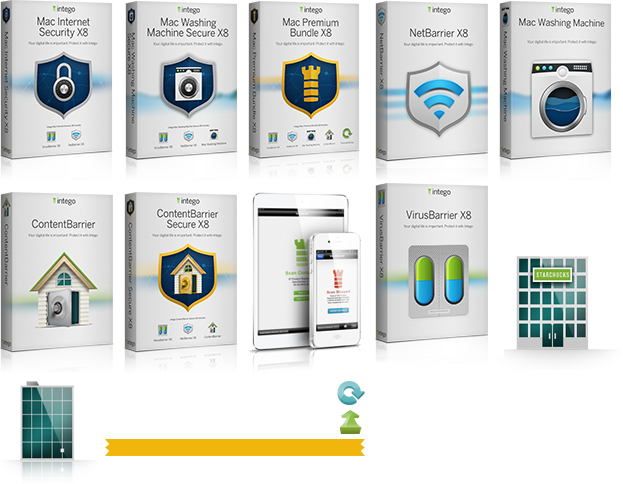Mac vs. PC Virus Removal Comparison
You probably remember the commercial. One particularly persuasive spot that ran as part of the Mac vs. PC campaign showed PC sneezing and crashing as the result of a virus. Mac meanwhile remained unaffected – free of viruses and free of concern. Was it an accurate depiction when it aired? That’s debatable. Is it an accurate depiction now? No.
Indisputably, Mac malware has increased in volume and sophistication over the last two years. The MacDefender attacks in 2011 used a fake antivirus offer to lure Mac users into providing their credit card numbers. The disguise and style of the attack evolved over time, showing increased complexity by the cyber-criminals. These malware developers used techniques they’d been honing on Windows users for years.
This year hasn’t been any safer for Mac owners, with the number of malware attacks continuing to rise. The Flashback malware alone infected over 600,000 Macs. And what’s most striking about Flashback is how nimble the malware is. Initially it posed as a Flash installer (hence the name) and entered Macs as a Trojan horse. It has since changed in character and installs itself with a drive-by download if you even visit a poisoned web page. Cyber-criminals are now putting significant time and effort into targeting Mac owners.
All of this recent malware activity seems to make that TV commercial feel a bit dated, doesn’t it? However, the belief that Macs are more safe and secure than PCs persists. Is there any truth to it? And what are the differences between Macs and PCs when it comes to avoiding and removing malware?
It may seem like we’re splitting hairs, but Macs may actually be safer without being much more secure. Macs are generally deemed safer because they aren’t as large of a target for cyber criminals. According to Gartner, the Mac market share in the United States in 2011 was just 11%, while it was estimated to be only 5% or lower globally. For malware writers, a bigger target usually leads to greater returns. So they may be less likely to write malware that targets Macs, simply because their efforts are less rewarding. However, this doesn’t mean that Mac OS X is significantly more secure.
While there are some differences in the root architecture of Windows and Mac OS X, they are more alike than most people realize. While the things you interact with are arranged differently and function differently, the variances become less significant the deeper you go. They both have file structures, system areas, configuration files and libraries that help make things work the way that we see them on the surface. Over the years, both operating systems have borrowed a lot from each other for their development.
As far as security features, Mac OS X and Windows both allow for permissions based accounts, and protect the system folder from write actions unless you are utilizing administrative privileges. However, many of the recent widespread attacks to both Macs and PCs haven’t directly targeted the operating system, but instead have entered through associated software such as Adobe’s Flash Player and Microsoft’s Office suite.
To their credit, Apple does a reasonably good job issuing security updates to stop known malware. However, there’s often a significant lag time between a malware attack and when they release a fix, and Apple is rarely transparent about the risks Mac owners face or the ways they can protect themselves. To take full advantage of the security fixes on any operating system, you must run the software updates diligently – something many computer owners don’t do.
Once you’re exposed to malware, there is very little difference in removing malware on Windows and Mac OS X, because the way malware infects each is much the same. Malware comes in; it makes changes to the system, and often tries to make network connections.
Ideally, anti-malware products (such as VirusBarrier X6) are already running on your system. If that’s the case, the malicious file will be identified and then deleted or quarantined before it can be run. If anti-malware isn’t installed until after the fact, a more thorough cleaning must be done.
In these instances, your anti-malware product may do a few different things. Most importantly, it will identify the original malware file and any files created by the malware. It will then remove these created files especially if they’re harmful or nuisance files. It will also remedy changes made by malware to known good files. And in the process of doing these things, it will also end any network connections made by the malware. Of course, that whole process, along with the accompanying headaches, can be avoided if you’re always running a product like VirusBarrier X6 or Internet Security Barrier X6.
Regardless of whether you’re on a Mac or a PC, just by connecting to the Internet, you’re putting your computer at risk. At Intego, we’re Apple fans just like you, and we’ve been providing security for Macs exclusively since 1997. Our team is dedicated to protecting your Mac, and the important files and personal information that are on it. We invite you to try any of our products free for 30 days and see why Intego is always a step ahead.
